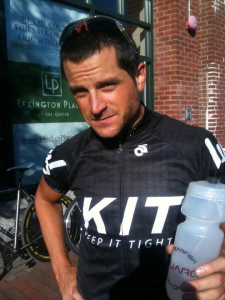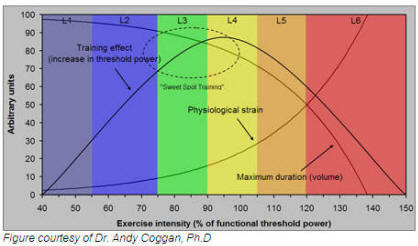By guest KIT blogger, Jessica Truslow-Trapotsis
“Momnmy are you leaving?”
My three-year old son sees me in my cycling attire. “Mommy are you leaving?” he asks. “Yes, I am sweetie.” I respond. “Can I go with you?” he asks hopefully. “No honey. Mommy isn’t going on a fun ride. When I get home we’ll go for a family ride. I won’t be long.”Over the summer my son and I had this conversation 3-4 times a week. He didn’t understand that I was equipped with my power meter and coach’s specific instructions in order to do a “training ride.” In no way would this be a “family” ride. I couldn’t even find adults who wanted to join me. Regardless, all he understood was that his mommy was putting on her cycling attire and leaving him…again. He would ask a few more times if he could join me before he finally gave up. I would quickly leave before I chose him over my training plan.
As I rode away I would try to rationalize my decision: I am a better mother for being in shape, right? I will live longer…yes, that’s right! And, of course, it’s important for my kids to see me pursue my own interests….yes, yes, yes! I just hoped that the benefits of these results outweighed the negatives of juggling schedules and being gone for hours each week in order to meet my training objectives. I also should add that I work full-time. The guilt lingers. How do I know if the trade-offs are worth it? There are many articles, like the one at the link below, that support my instinct that training benefits me in numerous ways:
8 Unexpected Benefits of Exercise
Media sources have made these assertions for a long time now. However, they have always felt a bit absent of data. Were they just telling me what I wanted to hear or were they really true? Recently, I read Dr. John Ratey’s book, Spark: The Revolutionary New Science of Exercise and The Brain. Using brain research Dr. Ratey explains the body’s biological and chemical responses to “moderate exercise.” His work reveals that exercise-induced brain chemistry alterations lead to improved cognition, reduced hormonal fluctuation in women, better stress and anxiety management as well as mood stabilization. “Moderate exercise” also staves off dementia and drastically improves one’s focus and attention (yes, this means all of us ADD adults should be exercising!). Aha! I really am a better mom/wife and even colleague as a result of exercising. Finally, I have the data to back up my rationalizations not just fluffy media assertions. Check out the link below for more information about Dr. Ratey’s work: Body-Mind Connection
“Mommy did you win?”
Upon returning from a triathlon last summer I was greeted by both my sons as I pulled into the driveway. I am not even out of the car before my five-year old son asked, “Mommy, did you win?” I hoped he just wanted to see if I had won a medal with which he could play, but I wondered if the real question wasn’t, “Mommy was all that time away from us worth it?” The guilt hadn’t entirely dissipated despite having read Dr. Ratey’s book.
Why? Well, if all I am interested in is achieving the benefits of “moderate exercise” then I could just walk or jog 3-4 times a week and be all set. But, I don’t. I train about 8-12 hours a week on average…sometimes more. So, what’s that all about? Well, truth is, I just love to compete. Maybe it’s all grounded in some kind of mind-body connection that Dr. Ratey explains with his research, but I just love pushing myself. Whether it is relative to other people’s performance or against the clock, the thrill of continual improvement and challenge is what drives me. To approach, face, and push beyond my physical and mental limits is a cleansing and re-calibrating endeavor.
For me, it’s just not enough to go for a jog, swim laps or go for a nice bike ride with friends – although all of those activities are great to do. And, believe me, the moment when the morning sun rises just enough above the trees to cascade light over Walden Pond is not lost on me. But the rush I get from pushing past what was previously defined as my “best” is restorative. The focus necessary to push to, and hopefully beyond, my limits quells the chaos that is so prevalent elsewhere in my life. In those moments I have to be fully present, attuned to everything that is happening right at that moment. It becomes the ultimate escape from my multi-tasking, information-overloaded world. It probably is just what Dr. Ratey is talking about but taken to another level.
So, now when I have to peelmy son off my leg while he exclaims, “Mommy, don’t go!” (I am not kidding. This actually happens.) I still feel pangs of guilt, but a bit less so….especially as the endorphins start to flow…
*Jessica Truslow-Trapotsis is a happily married mother of two little boys. She works full time during the week and enjoys putting the hammer down on the weekends. She will be participating in the ITU Triathlon World Championship in Auckland New Zealand in 2012.



